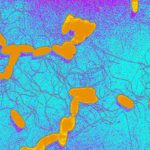Lien vers Pubmed [PMID] – 22315421
Proc. Natl. Acad. Sci. U.S.A. 2012 Feb;109(8):3065-70
The degree to which molecular epidemiology reveals information about the sources and transmission patterns of an outbreak depends on the resolution of the technology used and the samples studied. Isolates of Escherichia coli O104:H4 from the outbreak centered in Germany in May-July 2011, and the much smaller outbreak in southwest France in June 2011, were indistinguishable by standard tests. We report a molecular epidemiological analysis using multiplatform whole-genome sequencing and analysis of multiple isolates from the German and French outbreaks. Isolates from the German outbreak showed remarkably little diversity, with only two single nucleotide polymorphisms (SNPs) found in isolates from four individuals. Surprisingly, we found much greater diversity (19 SNPs) in isolates from seven individuals infected in the French outbreak. The German isolates form a clade within the more diverse French outbreak strains. Moreover, five isolates derived from a single infected individual from the French outbreak had extremely limited diversity. The striking difference in diversity between the German and French outbreak samples is consistent with several hypotheses, including a bottleneck that purged diversity in the German isolates, variation in mutation rates in the two E. coli outbreak populations, or uneven distribution of diversity in the seed populations that led to each outbreak.
